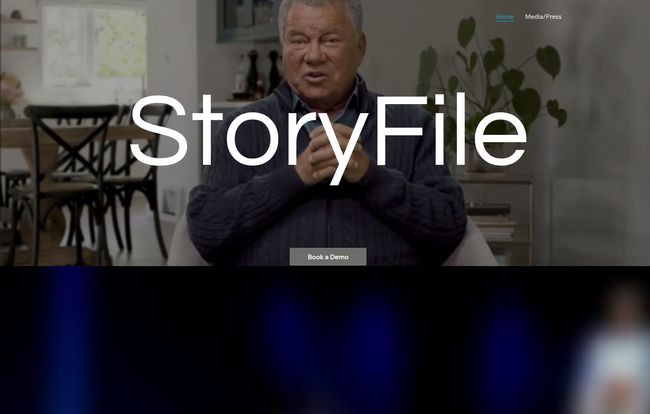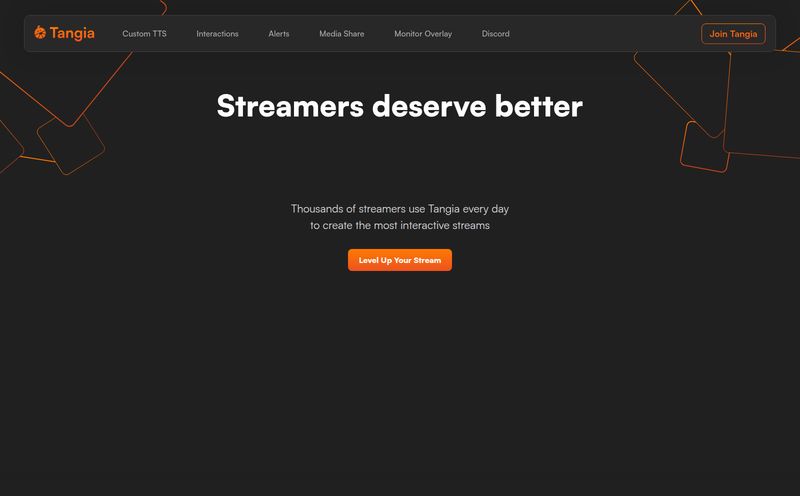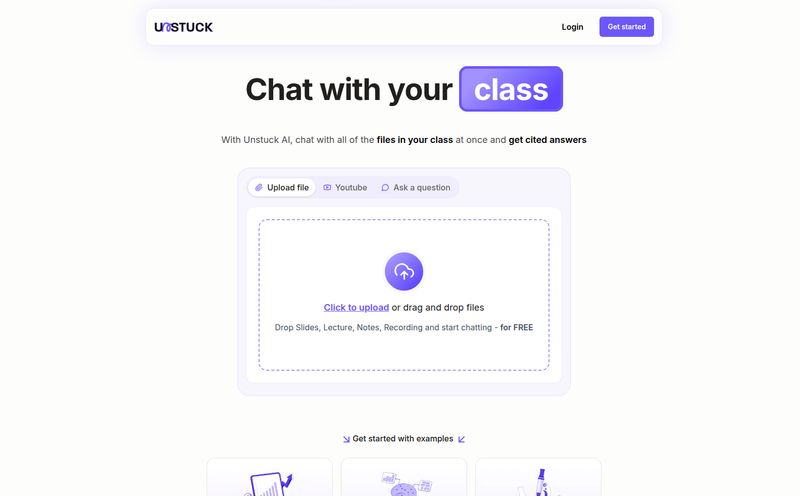I’ve been in the SEO and digital marketing game for a long time. I've seen trends come and go faster than you can say “algorithm update.” We went from stuffing keywords into invisible text (yikes) to chasing the perfect SERP snippet. But every now and then, something pops up that makes me lean a little closer to my screen. Something that isn’t just a new tool, but a potential shift in how we communicate.
That’s the feeling I got when I stumbled upon StoryFile.
At first glance, it looks like another high-tech video platform. Cool. But then you realize what it’s actually doing. It’s merging real human stories with conversational AI to create interactive video dialogues. You’re not just watching a video; you're having a conversation with the person in it. It’s a bit like a chatbot, but if the chatbot had a face, a voice, and a lifetime of real experiences. Wild, right?
What on Earth is StoryFile, Really?
Let’s cut through the jargon. StoryFile is a platform, powered by their tech called Conversa, that lets you record a person answering a ton of questions on video. Then, it uses AI to allow anyone, anywhere, to ask that person their own questions and get a natural, pre-recorded video response in return.
Think of it less like talking to a robot and more like accessing a perfectly cataloged, interactive library of someone’s life and knowledge. You ask, “What was your proudest moment?” and the AI instantly finds the clip where they answered that exact question, playing it back for you as if they were right there. It’s a living time capsule. A far cry from the clunky, text-based bots we’ve gotten used to arguing with about our Wi-Fi bill.
This isn't just a gimmick. We're seeing some heavy hitters use this technology. We're talking about the National WWII Museum, the Japanese American National Museum, and even Meta. When organizations like that get involved, you know it's more than just a flash in the pan.
How Does This AI Sorcery Actually Work?
Alright, so it’s not actual sorcery, but it’s close enough to feel like it. The process is a clever marriage of good old-fashioned storytelling and new-fangled tech.
It starts with a person—a WWII veteran, a CEO, a historical figure's descendant, maybe your own grandmother. They sit down and are filmed answering hundreds, sometimes thousands, of questions. The more questions, the more robust the final “StoryFile” becomes. This isn’t a quick selfie video; it's a dedicated production.
Once this massive vault of video answers is created, StoryFile's AI gets to work. Its a smart system. The Conversa platform doesn't just do a simple keyword search. It's designed to understand the intent behind a user's question. So, if you ask, “What kept you going during tough times?” it can intelligently match that to a pre-recorded answer for a question like, “Tell me about your sources of resilience.”

Visit StoryFile
The result is an interaction that feels surprisingly fluid. It's an illusion, of course—a very clever one. The AI isn't thinking or feeling; it's just an incredibly sophisticated matchmaker connecting your curiosity to a pre-existing answer. But when it works, it creates a powerful sense of connection.
The Human Side of the Code
Here’s what really gets me excited. This isn't just for a brand to create a more engaging FAQ page (though Anthem Healthcare is using it, which is an interesting corporate application). The real power is in its ability to preserve humanity.
“The most amazing thing is that you actually have a conversation with a World War II veteran.”
- Pete Crean, V.P. of Education, National WWII Museum
I mean, just read that quote. Imagine a classroom of kids not just reading about D-Day, but asking a soldier who was there what it felt like. That’s a different level of education. It’s visceral. It’s what makes history stick. The project with the National WWII Museum or the Japanese American National Museum isn't just about data; it’s about empathy. It's about ensuring these voices, these firsthand accounts, are never lost to time. We get to see the twinkle in their eye, the slight pause as they remember something difficult. You just can’t get that from a textbook.
Let's Be Real: The Ghosts in the Machine
Okay, as a professional in this space, I have to put my skeptic’s hat on for a second. Is it perfect? No, of course not. The biggest hurdle is that it's built on a foundation of pre-recorded videos. The AI can’t generate new responses. If you ask a question that is truly out of left field, one that the creators never anticipated, the system will likely stumble and serve up a generic “I don’t have an answer for that” clip.
There's also the effort. Creating a comprehensive StoryFile is a significant undertaking. This isn't something you knock out in an afternoon. It requires careful planning, long recording sessions, and a clear strategy. For a museum or a large corporation, the investment makes sense. For a smaller business or an individual, the resources required might be a barrier.
And let’s be honest, there’s a slight creepiness factor for some. The “uncanny valley” is a real phenomenon, and while this is a real person's video, the interactive nature of it can feel a little strange at first. We’re not quite at Star Trek’s holodeck yet, and some people might find the experience more eerie than engaging. It’s a fair point.
So, What's the Price for Immortality?
This is the million-dollar question, isn't it? As a marketer, one of the first things I look for is a pricing page. So, I went looking. And... I hit a 404 error page. A dead end.
This isn't uncommon, especially for high-end, enterprise-focused platforms. My gut tells me this is not a self-serve, credit-card-on-file kind of product. The prominent “Book a Demo” buttons all over their site suggest a bespoke pricing model. You talk to them, they assess your needs (are you the National Medal of Honor Museum or a family wanting to record grandpa?), and they give you a custom quote. So no, I can’t give you a neat little pricing table. You'll have to reach out to them directly.
Frequently Asked Questions about StoryFile
Is StoryFile a live AI that thinks for itself?
No, it's important to understand that StoryFile is not a generative AI like ChatGPT. It doesn't create new answers. It uses AI to intelligently search a large library of pre-recorded video clips to find the best response to your question.
What is the technology platform behind StoryFile called?
The core technology that powers these conversational video experiences is called Conversa.
Is this different from a regular video or chatbot?
Yes, significantly. A regular video is a passive, one-way experience. A regular chatbot is typically text-based and lacks human emotion. StoryFile combines the best of both, offering a face-to-face, interactive conversation with the emotional depth of real video.
Can anyone make a StoryFile?
Technically, yes, but it's a commitment. Creating a truly good StoryFile requires filming answers to hundreds of potential questions, so it takes a lot more effort than just recording a simple video.
Who is using this technology right now?
Some major organizations are already onboard. The list includes the National WWII Museum, Japanese American National Museum, Meta, and Anthem Healthcare, among others. This shows its applicability in culture, education, and corporate sectors.
Is StoryFile free to use?
Based on their enterprise-focused clients and the lack of a public pricing page, it is highly unlikely that StoryFile is a free service. It seems to operate on a custom, quote-based pricing model. You would need to book a demo to get specifics.
Final Thoughts on a Living Archive
So, where does that leave us? StoryFile is one of the most intriguing pieces of communication tech I've seen in years. It's not just about traffic generation or conversion rates; it taps into something much more fundamental: the human desire to share and preserve our stories.
It has its limitations, for sure. It’s not a perfect, sentient digital being. But it doesn’t need to be. Its value lies in creating a new format for legacy. It's a step beyond the static photo album, the flat documentary, or the endless scroll of a social media feed. It’s a living archive, an interactive memory. And for a content guy like me, who believes in the power of a good story, that's pretty damn exciting.



